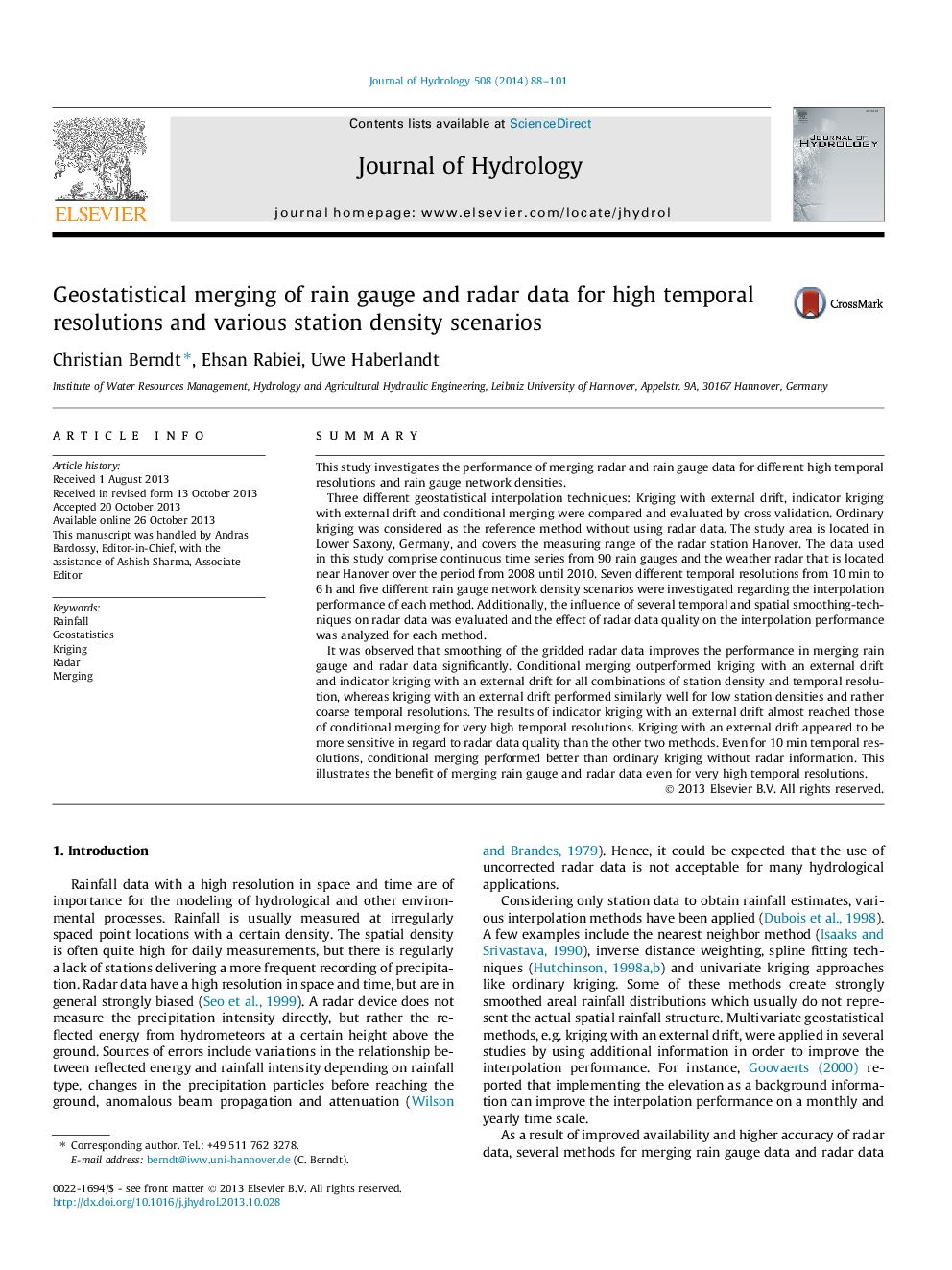| Article ID | Journal | Published Year | Pages | File Type |
|---|---|---|---|---|
| 4576039 | Journal of Hydrology | 2014 | 14 Pages |
•Three merging methods for high resolution radar and gauge rainfall were compared.•Effect of station density, temporal resolution and radar data smoothing was analyzed.•Radar data smoothing improved the interpolation performance significantly.•Conditional merging performed best for all station densities and temp. resolutions.•Radar rainfall quality has a strong impact on the merging performance.
SummaryThis study investigates the performance of merging radar and rain gauge data for different high temporal resolutions and rain gauge network densities.Three different geostatistical interpolation techniques: Kriging with external drift, indicator kriging with external drift and conditional merging were compared and evaluated by cross validation. Ordinary kriging was considered as the reference method without using radar data. The study area is located in Lower Saxony, Germany, and covers the measuring range of the radar station Hanover. The data used in this study comprise continuous time series from 90 rain gauges and the weather radar that is located near Hanover over the period from 2008 until 2010. Seven different temporal resolutions from 10 min to 6 h and five different rain gauge network density scenarios were investigated regarding the interpolation performance of each method. Additionally, the influence of several temporal and spatial smoothing-techniques on radar data was evaluated and the effect of radar data quality on the interpolation performance was analyzed for each method.It was observed that smoothing of the gridded radar data improves the performance in merging rain gauge and radar data significantly. Conditional merging outperformed kriging with an external drift and indicator kriging with an external drift for all combinations of station density and temporal resolution, whereas kriging with an external drift performed similarly well for low station densities and rather coarse temporal resolutions. The results of indicator kriging with an external drift almost reached those of conditional merging for very high temporal resolutions. Kriging with an external drift appeared to be more sensitive in regard to radar data quality than the other two methods. Even for 10 min temporal resolutions, conditional merging performed better than ordinary kriging without radar information. This illustrates the benefit of merging rain gauge and radar data even for very high temporal resolutions.
